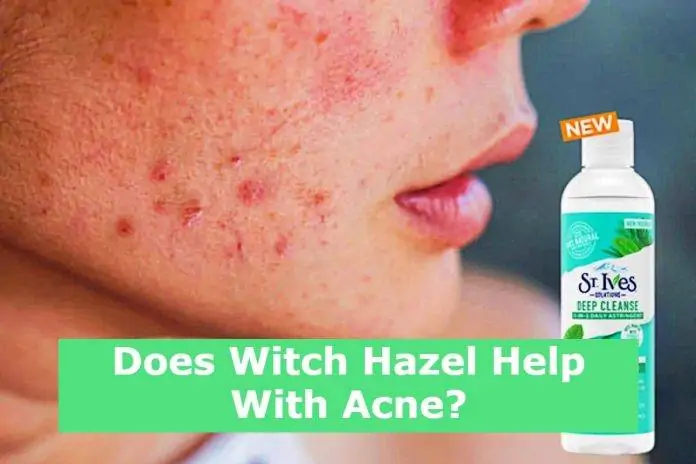Thayers
Witch hazel is a flowering shrub plant, grown naturally in North America and Asia. The tannins found in the bark have anti-inflammatory and antioxidant properties. They can help to reduce the number of bacteria on your skin, as well as control inflammatory acne.
Witch hazel is also used in skin care products. Several face cleansers and facial toners contain witch hazel. Its astringent properties make it effective at removing excess oil from the skin.
While it may be helpful for certain skin conditions, it’s not always a good idea for other types. If you’re prone to acne or have dry skin, witch hazel may be counterproductive. On the other hand, if you have oily skin, it can actually improve your acne.
Aside from its astringent properties, witch hazel is also a natural antiseptic. This is especially important for inflammatory acne, as bacteria can multiply in the clogged pores of your skin.
The best witch hazel and acne treatment is one that contains both witch hazel and aloe vera. Some formulations also contain alcohol. Alcohol can be highly irritating to the skin. Therefore, if you’re using a moisturizer with witch hazel, opt for one without alcohol.
Another type of astringent, zinc, is also effective against mild to moderate acne. Zinc can regulate cell turnover and the production of sebum. You can also buy it in nutritional supplement form.
For those who aren’t sure whether or not it’s a good idea to use witch hazel as an acne remedy, check with your doctor. Some of the benefits include soothing the inflammation, preventing breakouts, and reducing redness.
While it’s not a miracle cure, it’s one of the easiest ways to balance out your skin. In fact, it has been used for hundreds of years to treat minor wounds, and it is still a common ingredient in many skin care products.
One of the most popular uses of witch hazel is as a facial toner. This is because it has anti-inflammatory and antibacterial properties. Additionally, it can act as an exfoliant, scrubbing away dead skin cells and excess oil.
Dickinson’s
Witch Hazel is a flowering shrub plant that is used to soothe and heal the skin. It can be found in many skin care products.
Many people have been using witch hazel for years, and it has been known to treat a wide variety of skin ailments. The extract can be applied topically to help reduce redness and inflammation.
The tannins found in witch hazel have long been thought to be helpful in treating inflamed skin. However, it can also have a drying effect on the skin, which is why it is best to use it with caution.
In addition to being an astringent, witch hazel can reduce inflammation, as well as speed up the healing of skin wounds. It can also help balance oil production.
If you have acne-prone skin, you may find that it is difficult to keep your pores clear of dirt and oil. This is because people with acne tend to produce more oil. When this happens, the pores get clogged and breakouts occur. To keep this from happening, you need to clean the pores regularly.
Witch Hazel is an effective way to clean the pores, which can help control acne. It can also remove excess oil and moisturize the skin. You can apply it after washing your face.
Witch Hazel can be used on any type of skin. Even sensitive skin can benefit from this ingredient. Although it will not completely eliminate acne, it can help to reduce the size and redness of the pimples and prevent further outbreaks.
The most important thing to keep in mind is that witch hazel can be irritating to the skin if it is applied to dry, sensitive skin. Be sure to patch test the product on a small area of skin first, to ensure that you do not have any allergic reactions.
Aside from reducing redness and irritation, witch hazel can also be used to tighten and tone the skin. It can also help with psoriasis, eczema, and a host of other skin issues.
There are many different ways to apply witch hazel, including spraying it onto a cotton pad or directly onto the affected area. After applying it, you should follow with a moisturizer to seal in the moisture.




